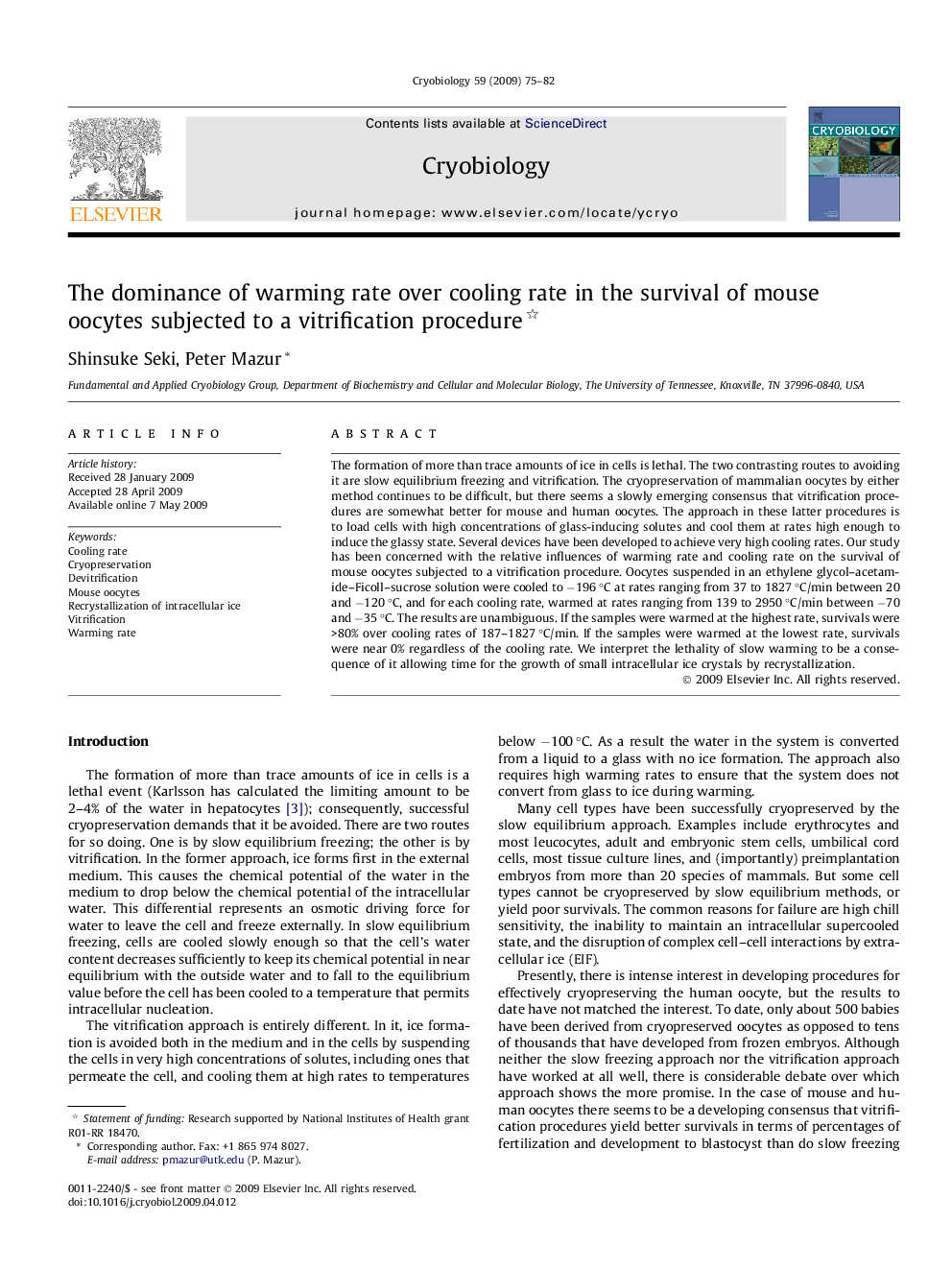| کد مقاله | کد نشریه | سال انتشار | مقاله انگلیسی | نسخه تمام متن |
|---|---|---|---|---|
| 2168854 | 1092919 | 2009 | 8 صفحه PDF | دانلود رایگان |

The formation of more than trace amounts of ice in cells is lethal. The two contrasting routes to avoiding it are slow equilibrium freezing and vitrification. The cryopreservation of mammalian oocytes by either method continues to be difficult, but there seems a slowly emerging consensus that vitrification procedures are somewhat better for mouse and human oocytes. The approach in these latter procedures is to load cells with high concentrations of glass-inducing solutes and cool them at rates high enough to induce the glassy state. Several devices have been developed to achieve very high cooling rates. Our study has been concerned with the relative influences of warming rate and cooling rate on the survival of mouse oocytes subjected to a vitrification procedure. Oocytes suspended in an ethylene glycol–acetamide–Ficoll–sucrose solution were cooled to −196 °C at rates ranging from 37 to 1827 °C/min between 20 and −120 °C, and for each cooling rate, warmed at rates ranging from 139 to 2950 °C/min between −70 and −35 °C. The results are unambiguous. If the samples were warmed at the highest rate, survivals were >80% over cooling rates of 187–1827 °C/min. If the samples were warmed at the lowest rate, survivals were near 0% regardless of the cooling rate. We interpret the lethality of slow warming to be a consequence of it allowing time for the growth of small intracellular ice crystals by recrystallization.
Journal: Cryobiology - Volume 59, Issue 1, August 2009, Pages 75–82